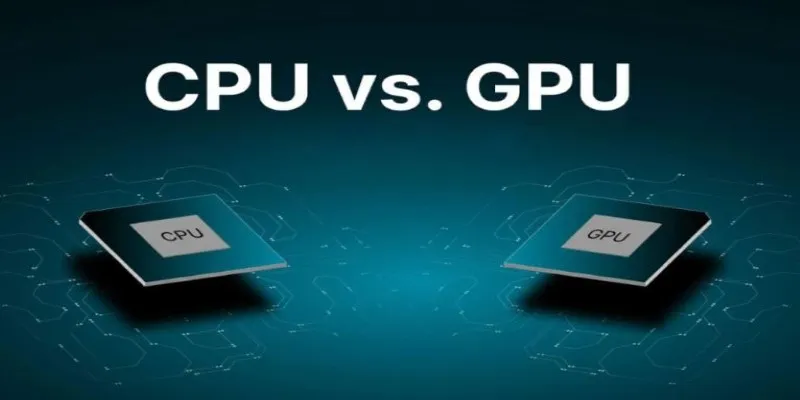Artificial Intelligence (AI) is omnipresent—integrated into our smartphones, vehicles, and even household appliances. However, many people are unaware that the true magic of AI unfolds within powerful machines. This magic isn't solely about software or clever algorithms; it's about the specialized chips that endow AI with its remarkable speed and intelligence.
Behind every smart assistant or autonomous vehicle are GPUs, TPUs, and Neuromorphic Chips working silently to drive the next wave of technological advancement. These tiny pieces of hardware are making AI faster, smarter, and more efficient than ever before. Let's delve into their workings.
Understanding AI Hardware
AI hardware serves as the engine for today's most advanced technologies. It transcends mere code execution, involving devices engineered to think rapidly, process vast amounts of data, and power complex tasks such as image recognition, speech analysis, and autonomous driving. Traditional computer hardware wasn't designed for such demanding tasks, leading to the development of a new generation of AI-optimized hardware designed to meet the needs of modern artificial intelligence.
At the heart of this hardware revolution is the need for speed, efficiency, and the ability to process massive volumes of information in real-time. AI models, particularly those utilizing machine learning and deep learning, perform millions of calculations within seconds. Without high-performance hardware, these systems would collapse under pressure. This is where GPUs, TPUs, and Neuromorphic Chips come into play, each offering unique strengths to tackle distinct challenges, thereby propelling AI performance and innovation to new heights.
GPUs – The Early Power Behind AI
Graphics Processing Units (GPUs) were initially designed for rendering graphics in video games and animations. However, their ability to handle multiple tasks concurrently made them ideal for AI workloads.

Unlike traditional CPUs (Central Processing Units), which excel at executing one task at a time, GPUs are optimized for parallel processing, enabling them to perform thousands of small calculations simultaneously. AI models, particularly deep learning models, require such parallel processing to efficiently manage large datasets.
GPUs quickly gained popularity for training AI models because they significantly reduce the time needed to train a model—from weeks to just days or even hours. Companies like NVIDIA have developed specialized GPUs tailored for AI applications, making them even faster and more powerful.
Beyond training, GPUs are also crucial for AI inference tasks, wherein an AI model makes predictions based on new data. GPUs outperform general-purpose CPUs in both training and inference tasks.
TPUs – AI Hardware Built for Speed
Tensor Processing Units (TPUs) represent a significant advancement in AI hardware. Unlike GPUs, initially developed for graphics and later adapted for AI, TPUs were purpose-built for machine learning tasks from the ground up. Google developed TPUs to support its expanding array of AI-powered services, including Google Search, Google Translate, and Google Assistant.
TPUs stand out for their proficiency in handling tensor computations, a mathematical operation central to many machine learning models. These computations are used in neural networks, which power tasks like image recognition, natural language processing, and recommendation systems.
TPUs work exceptionally well with TensorFlow, Google's widely-used open-source machine learning framework. This seamless integration allows TPUs to train large-scale AI models faster than traditional GPUs in certain scenarios. Another key advantage is energy efficiency. While GPUs are versatile and designed for multiple applications, TPUs focus exclusively on AI tasks, resulting in faster and more power-efficient performance for specific workloads.
Today, TPUs are integral to Google Cloud services. Companies can rent TPU-powered servers to build, train, and deploy AI models without investing in expensive physical hardware. This approach has democratized access to advanced AI tools, fostering innovation across various industries.
Neuromorphic Chips – The Future of AI Hardware
While GPUs and TPUs emphasize processing speed and data handling, Neuromorphic Chips aim to emulate the workings of the human brain. These chips are designed to process information similarly to how neurons function in our brains, enabling them to handle complex tasks with minimal power consumption and high efficiency.

Neuromorphic Chips employ a design known as spiking neural networks (SNNs), which do not continuously process information. Instead, they send signals (or spikes) only when specific conditions are met, akin to how neurons operate in the brain. This design conserves energy and allows for rapid responses in certain tasks.
Although still in the developmental stages compared to GPUs and TPUs, these chips hold immense potential for future AI systems requiring low-power computing, such as edge devices or smart sensors. Companies like Intel have developed neuromorphic chips like Loihi, currently being tested for applications in robotics, healthcare, and smart environments.
As this technology evolves, Neuromorphic Chips may become integral to the AI hardware ecosystem, working alongside GPUs and TPUs to create smarter, faster, and more energy-efficient systems for diverse real-world applications across industries.
Conclusion
AI hardware is the driving force behind modern artificial intelligence. Without it, AI systems would struggle to process large datasets or deliver rapid results. GPUs, TPUs, and Neuromorphic Chips each play a crucial role in enhancing the speed, efficiency, and power of AI technology. While GPUs introduced parallel processing to AI, TPUs offered faster and more specialized performance. Neuromorphic Chips now provide a glimpse into the future with brain-inspired computing. As AI continues to evolve, the significance of AI hardware will only increase, shaping smarter systems capable of handling complex tasks swiftly and with greater energy efficiency.
 zfn9
zfn9